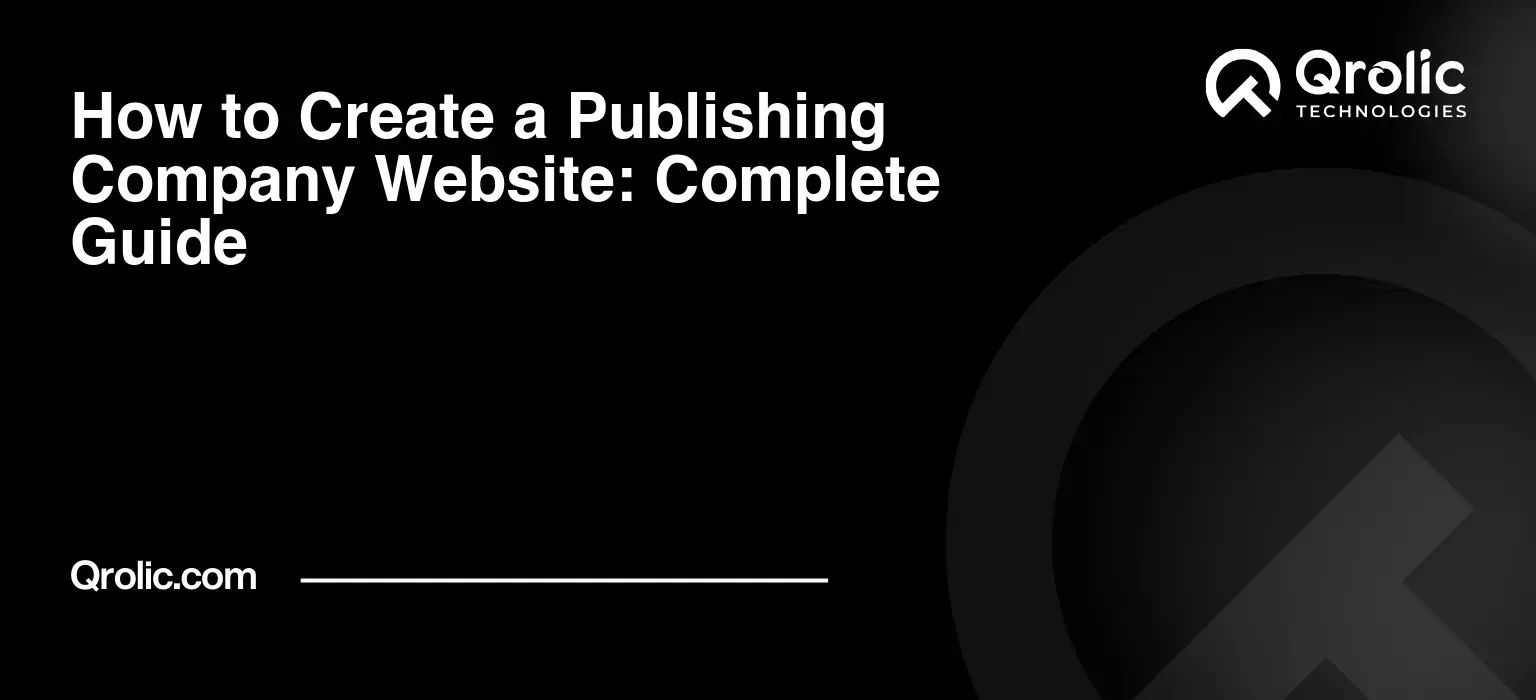Quick Summary:
- A website is vital for publishing company growth.
- Plan your site’s purpose and create great content.
- Optimize your site for search and market it effectively.
- Continuously analyze and improve your online presence.
Table of Contents
- Why Your Publishing Company Needs a Website (and Why Now!)
- Beyond the Brochure: The Real Benefits of a Publishing Website
- The Cost of NOT Having a Website
- Planning Your Publishing Company Website: The Foundation for Success
- Define Your Website’s Purpose and Goals
- Understanding Your Target Audience
- Sitemap and Information Architecture: Structuring for Success
- Choosing the Right Platform: CMS vs. Custom Development
- Content Management Systems (CMS): The Popular Choice
- Custom Development: The Tailored Solution
- Literary Web Design: Creating an Engaging Online Experience
- Choosing a Theme: The Visual Foundation
- Typography: Choosing the Right Fonts
- Color Palette: Creating Visual Harmony
- Imagery: Visual Storytelling
- Mobile-First Design: Reaching Readers on the Go
- Content Creation: The Heart of Your Publishing Website
- Author Pages: Showcasing Your Talent
- Book Pages: Captivating Readers
- Blog: Sharing Insights and Building Community
- Submissions Page: Guiding Aspiring Authors
- About Us Page: Telling Your Story
- SEO Optimization: Making Your Website Discoverable
- Keyword Research: Understanding What People Are Searching For
- On-Page Optimization: Optimizing Your Website’s Content
- Off-Page Optimization: Building Your Website’s Authority
- Essential Plugins and Tools: Enhancing Your Website’s Functionality (WordPress Example)
- Marketing Your Publishing Website: Reaching Your Target Audience
- Content Marketing: Attracting and Engaging Your Audience
- Email Marketing: Building Relationships with Your Readers
- Social Media Marketing: Connecting with Readers on Social Platforms
- Paid Advertising: Reaching a Wider Audience Quickly
- Analyzing and Improving Your Website: Continuous Growth
- Google Analytics: Understanding Your Website’s Performance
- A/B Testing: Optimizing Your Website for Conversions
- User Feedback: Gathering Insights from Your Audience
- Qrolic Technologies: Your Partner in Digital Success
- Our Services for Publishing Companies
- Why Choose Qrolic Technologies?
- Conclusion: Building a Thriving Online Presence for Your Publishing Company
Why Your Publishing Company Needs a Website (and Why Now!)
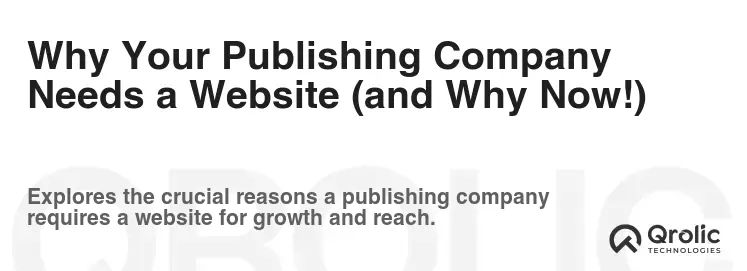
Let’s face it. In today’s world, if you’re not online, you’re almost invisible. And for a publishing company, that’s a death sentence. Your website isn’t just a digital brochure; it’s the central hub of your entire publishing operation, a virtual storefront, and the vital link connecting you to authors, readers, and the wider literary world.
Beyond the Brochure: The Real Benefits of a Publishing Website
Think of your website as more than just a place to list your books. It’s a dynamic platform that offers a multitude of benefits:
- Enhanced Visibility: In the crowded marketplace of publishing, a strong online presence helps you stand out. A well-optimized website improves your search engine ranking, making it easier for potential authors and readers to find you. Think of it as your digital shingle, prominently displayed in the town square (that’s the internet!).
- Direct Author Acquisition: Talented authors are constantly seeking publishers. Your website is your chance to showcase your publishing philosophy, your success stories, and the unique value you bring to the table. Make it a magnet for the next generation of literary stars.
- Expanded Readership: Reaching readers beyond traditional brick-and-mortar stores is crucial. Your website allows you to market your books directly to a global audience, build an email list, and cultivate a loyal following.
- Brand Building: A professional website strengthens your brand identity. It communicates your values, your publishing niche, and the overall aesthetic of your company. It’s your chance to tell your story and connect with your audience on a deeper level.
- Efficient Book Promotion: Launching a new book? Your website is the perfect platform for announcing releases, sharing excerpts, hosting author interviews, and selling books directly. It’s your personal publicity machine!
- Streamlined Communication: Answer frequently asked questions, provide contact information, and offer support services through your website. It streamlines communication with authors, readers, and industry professionals.
- Control Over Your Narrative: In a world saturated with opinions, your website gives you control over your own narrative. You can shape your company’s image, share your values, and address any misconceptions directly.
- Cost-Effective Marketing: Compared to traditional advertising methods, a website offers a cost-effective way to reach a large audience. With proper SEO and content marketing, you can generate leads and drive sales without breaking the bank.
The Cost of NOT Having a Website
The question isn’t just “Why should I have a website?” but “What am I losing by not having one?” Here’s what’s at stake:
- Missed Opportunities: You’re missing out on countless opportunities to connect with authors, readers, and industry partners.
- Lost Revenue: Without an online sales channel, you’re limiting your potential revenue streams.
- Damaged Credibility: In the digital age, a lack of online presence can raise red flags. Potential authors and readers may question your legitimacy.
- Competitive Disadvantage: Your competitors with strong websites are gaining an edge. They’re attracting authors, building readership, and driving sales while you’re left behind.
- Stunted Growth: Without a website, your publishing company’s growth potential is severely limited. You’re essentially operating with one hand tied behind your back.
Planning Your Publishing Company Website: The Foundation for Success
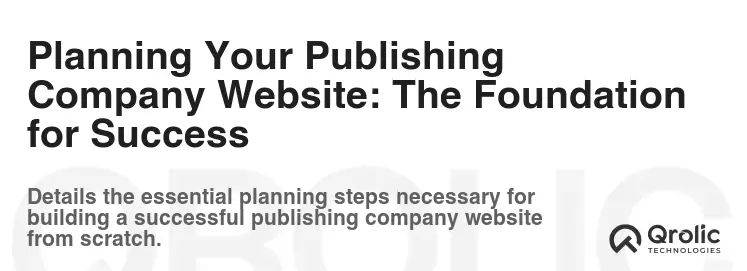
Before you even think about choosing a domain name or picking a theme, you need a solid plan. This stage is all about defining your goals, understanding your audience, and mapping out the structure of your website.
Define Your Website’s Purpose and Goals
What do you want your website to achieve? Be specific. Vague goals like “increasing sales” are not enough. Consider these questions:
- Primary Goal: What is the single most important thing you want visitors to do on your website? (e.g., submit a manuscript, purchase a book, sign up for your newsletter).
- Author Acquisition: How will your website attract and engage potential authors? What information will they need? What kind of submission process will you outline?
- Reader Engagement: How will you connect with readers and build a loyal following? Will you offer exclusive content, run contests, or host online events?
- Book Sales: Will you sell books directly through your website? If so, what payment options will you offer? How will you handle shipping and fulfillment?
- Brand Building: How will your website reflect your brand identity and values? What kind of tone and voice will you use? What visual elements will you incorporate?
Understanding Your Target Audience
Who are you trying to reach with your website? Understanding your target audience is crucial for creating content and design that resonates with them.
- Authors: What are their needs and concerns? What kind of information are they looking for in a publisher?
- Readers: What genres do they enjoy? What are their reading habits? Where do they buy their books?
- Industry Professionals: What kind of information are they interested in? What are their expectations for a publishing company website?
Create detailed “buyer personas” – fictional representations of your ideal audience members. This will help you make informed decisions about your website’s content, design, and marketing strategy.
Sitemap and Information Architecture: Structuring for Success
A sitemap is a visual representation of your website’s structure. It outlines the different pages and how they are interconnected. A well-planned sitemap ensures that visitors can easily find the information they’re looking for.
Here’s a suggested sitemap for a publishing company website:
- Homepage: The entry point to your website. It should provide a clear overview of your company, your books, and your values.
- About Us: A page dedicated to your company’s history, mission, and team.
- Our Books: A catalog of all your published books, organized by genre or author.
- Authors: A section dedicated to your authors, with individual author pages showcasing their bios and books.
- Submissions: Information for authors who want to submit their manuscripts, including guidelines and contact information.
- News & Events: A blog or news section where you can share updates, announcements, and upcoming events.
- Blog: Articles related to your niche, offering information and engaging with audience.
- Contact Us: A page with your contact information and a contact form.
- Shop (Optional): If you plan to sell books directly, this is where you’ll showcase your inventory and handle online transactions.
- Rights & Permissions: Information for those seeking rights or permissions for your publications.
- FAQ: A page answering frequently asked questions.
Key Considerations for Sitemap Design:
- User-Friendliness: Make it easy for visitors to navigate your website.
- SEO Optimization: Use relevant keywords in your page titles and descriptions.
- Scalability: Ensure your sitemap can accommodate future growth and new content.
Choosing the Right Platform: CMS vs. Custom Development
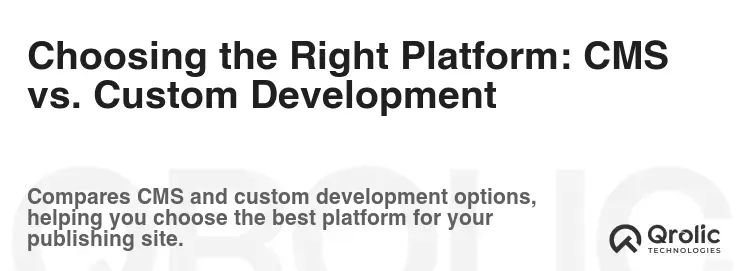
You have two main options for building your website: a content management system (CMS) or custom development. Each option has its own pros and cons.
Content Management Systems (CMS): The Popular Choice
A CMS is a software application that allows you to create and manage website content without needing to write code.
Popular CMS Platforms:
- WordPress: The most popular CMS in the world, known for its flexibility, ease of use, and extensive library of themes and plugins.
- Joomla: A powerful CMS with advanced features for managing complex websites.
- Drupal: A highly customizable CMS that’s ideal for large organizations and websites with complex requirements.
- Squarespace: A user-friendly website builder with a focus on design and simplicity.
- Wix: Another popular website builder with a drag-and-drop interface.
Pros of Using a CMS:
- Ease of Use: Most CMS platforms are relatively easy to learn and use, even for non-technical users.
- Flexibility: CMS platforms offer a wide range of themes and plugins that allow you to customize your website’s design and functionality.
- Cost-Effective: CMS platforms are generally more affordable than custom development.
- SEO-Friendly: Most CMS platforms are designed with SEO in mind, making it easier to optimize your website for search engines.
- Large Community Support: You can find plenty of resources, tutorials, and support forums for most CMS platforms.
Cons of Using a CMS:
- Security Vulnerabilities: CMS platforms can be vulnerable to security threats if not properly maintained.
- Plugin Conflicts: Installing too many plugins can sometimes cause conflicts and slow down your website.
- Limited Customization: While CMS platforms offer a lot of flexibility, they may not be able to accommodate highly specific or complex requirements.
Custom Development: The Tailored Solution
Custom development involves building your website from scratch using code. This option gives you complete control over every aspect of your website.
Pros of Custom Development:
- Complete Customization: You can create a website that perfectly matches your specific needs and requirements.
- Enhanced Security: Custom-built websites are generally more secure than CMS-based websites.
- Improved Performance: Custom-built websites can be optimized for performance, resulting in faster loading times.
Cons of Custom Development:
- High Cost: Custom development is significantly more expensive than using a CMS.
- Time-Consuming: Building a website from scratch takes a lot of time and effort.
- Technical Expertise Required: You’ll need to hire a team of experienced developers.
- Maintenance: Maintaining a custom-built website requires ongoing technical expertise.
Which Option is Right for You?
For most publishing companies, a CMS like WordPress is the best option. It offers a good balance of flexibility, ease of use, and affordability. However, if you have highly specific requirements or complex functionality, custom development may be a better choice.
Literary Web Design: Creating an Engaging Online Experience
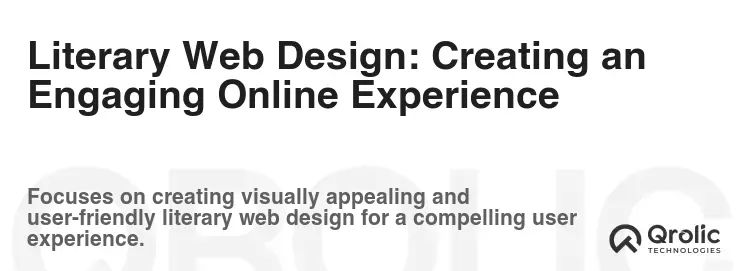
Your website’s design is crucial for attracting and retaining visitors. A well-designed website is visually appealing, easy to navigate, and reflects your brand identity.
Choosing a Theme: The Visual Foundation
If you’re using a CMS, you’ll need to choose a theme. A theme is a pre-designed template that determines the overall look and feel of your website.
Key Considerations for Choosing a Theme:
- Relevance: Choose a theme that’s relevant to the publishing industry.
- Responsiveness: Ensure the theme is responsive, meaning it adapts to different screen sizes (desktops, tablets, and mobile phones).
- Customizability: Choose a theme that allows you to easily customize the colors, fonts, and layout.
- SEO Optimization: Choose a theme that’s optimized for search engines.
- Reviews and Ratings: Check the reviews and ratings of the theme before you buy it.
Recommended WordPress Themes for Publishing Companies:
- Divi: A highly customizable theme with a drag-and-drop builder.
- Astra: A lightweight and SEO-friendly theme.
- OceanWP: A versatile theme with a wide range of features.
- GeneratePress: A minimalist theme that’s focused on performance.
Typography: Choosing the Right Fonts
Typography plays a crucial role in readability and aesthetics. Choose fonts that are easy to read and reflect your brand identity.
Key Considerations for Choosing Fonts:
- Readability: Choose fonts that are easy to read on screen.
- Hierarchy: Use different font sizes and styles to create a clear visual hierarchy.
- Consistency: Use the same fonts throughout your website.
- Pairing: Choose fonts that complement each other.
Recommended Fonts for Publishing Websites:
- Serif Fonts: Garamond, Times New Roman, Georgia (for body text)
- Sans-Serif Fonts: Arial, Helvetica, Open Sans (for headings and navigation)
Color Palette: Creating Visual Harmony
Your website’s color palette should be consistent with your brand identity and evoke the right emotions.
Key Considerations for Choosing Colors:
- Brand Identity: Choose colors that reflect your brand’s personality and values.
- Contrast: Ensure there’s enough contrast between your text and background colors.
- Accessibility: Choose colors that are accessible to people with visual impairments.
- Color Psychology: Consider the psychological effects of different colors.
Recommended Color Palettes for Publishing Websites:
- Classic: Black, white, and gray.
- Warm: Earth tones like brown, beige, and gold.
- Modern: Bold colors like blue, green, and orange.
Imagery: Visual Storytelling
Images can enhance your website’s visual appeal and help you tell your story.
Key Considerations for Choosing Images:
- Relevance: Choose images that are relevant to your content and brand.
- Quality: Use high-quality images that are properly sized and optimized for the web.
- Originality: Use original images whenever possible.
- Copyright: Ensure you have the rights to use the images you choose.
Recommended Sources for Images:
- Unsplash: A website with free high-resolution photos.
- Pexels: Another website with free stock photos.
- Depositphotos: A website with premium stock photos.
- Your Own Photos: If possible, use your own photos to create a more personal and authentic website.
Mobile-First Design: Reaching Readers on the Go
More and more people are accessing the internet on their mobile devices. It’s crucial to ensure that your website is responsive and mobile-friendly.
Key Considerations for Mobile-First Design:
- Responsive Theme: Choose a theme that’s responsive and adapts to different screen sizes.
- Mobile-Friendly Navigation: Make sure your navigation is easy to use on mobile devices.
- Optimized Images: Optimize your images for mobile devices to reduce loading times.
- Touch-Friendly Elements: Make sure your buttons and other interactive elements are easy to tap on mobile devices.
Content Creation: The Heart of Your Publishing Website
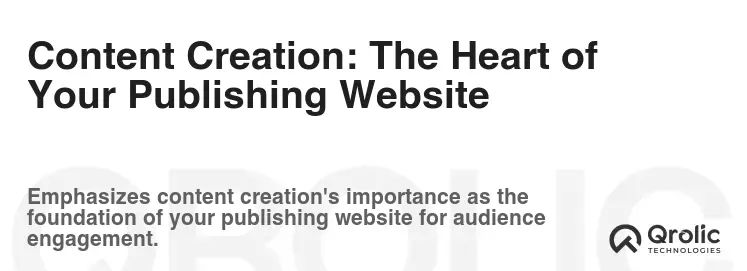
Content is king. Your website’s content is what attracts visitors, engages them, and encourages them to take action.
Author Pages: Showcasing Your Talent
Each of your authors should have their own dedicated page on your website. This page should include:
- Author Bio: A short biography of the author.
- Author Photo: A professional headshot of the author.
- Book List: A list of all the books the author has published with your company.
- Links to Buy Books: Links to purchase the author’s books on your website or on other online retailers.
- Social Media Links: Links to the author’s social media profiles.
Book Pages: Captivating Readers
Each of your books should have its own dedicated page on your website. This page should include:
- Book Cover: A high-quality image of the book cover.
- Book Description: A compelling description of the book.
- Excerpts: Sample chapters or excerpts from the book.
- Reviews: Reviews from critics and readers.
- Author Bio: A brief biography of the author.
- Links to Buy: Links to purchase the book on your website or on other online retailers.
Blog: Sharing Insights and Building Community
A blog is a great way to share insights, build community, and attract new visitors to your website.
Content Ideas for Your Publishing Blog:
- Author Interviews: Interview your authors about their books and writing process.
- Book Reviews: Review books in your genre.
- Publishing Tips: Share tips for aspiring authors.
- Industry News: Share news and updates from the publishing industry.
- Behind-the-Scenes: Give readers a behind-the-scenes look at your publishing company.
Submissions Page: Guiding Aspiring Authors
Your submissions page should provide clear and concise information for authors who want to submit their manuscripts.
Information to Include on Your Submissions Page:
- Submission Guidelines: Detailed guidelines for submitting manuscripts.
- Genres Accepted: A list of the genres you publish.
- Submission Process: A step-by-step guide to the submission process.
- Contact Information: Contact information for the submissions editor.
About Us Page: Telling Your Story
Your “About Us” page is your opportunity to tell your story and connect with your audience.
Information to Include on Your About Us Page:
- Company History: A brief history of your publishing company.
- Mission Statement: Your company’s mission statement.
- Team Bios: Biographies of your team members.
- Values: Your company’s core values.
SEO Optimization: Making Your Website Discoverable
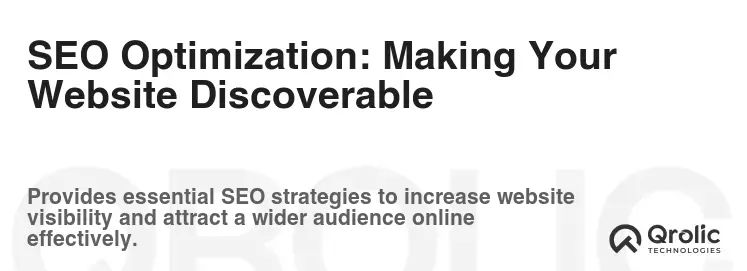
SEO optimization is the process of improving your website’s ranking in search engine results pages (SERPs). This is crucial for attracting organic traffic to your website.
Keyword Research: Understanding What People Are Searching For
Keyword research is the process of identifying the keywords that people are using to search for information related to your publishing company.
Tools for Keyword Research:
- Google Keyword Planner: A free tool from Google that helps you find keywords and estimate their search volume.
- SEMrush: A paid tool that offers a wide range of SEO features, including keyword research, competitor analysis, and rank tracking.
- Ahrefs: Another popular paid SEO tool with similar features to SEMrush.
Keywords to Target:
- “Publishing company” + [your genre]: (e.g., “publishing company science fiction,” “publishing company romance”)
- “Literary agent” + [your genre]: (e.g., “literary agent fantasy,” “literary agent thriller”)
- “Submit manuscript” + [your genre]: (e.g., “submit manuscript historical fiction,” “submit manuscript poetry”)
- [Your company name]: Target your own company name to ensure that people can easily find your website.
On-Page Optimization: Optimizing Your Website’s Content
On-page optimization involves optimizing your website’s content and HTML code to improve its ranking in search engine results.
Key On-Page Optimization Techniques:
- Keyword-Rich Titles: Use relevant keywords in your page titles.
- Compelling Meta Descriptions: Write compelling meta descriptions that encourage people to click on your search results.
- Keyword-Rich Headings: Use relevant keywords in your headings (H1, H2, H3, etc.).
- High-Quality Content: Create high-quality, informative, and engaging content that satisfies the user’s search intent.
- Image Optimization: Optimize your images by using descriptive file names and alt tags.
- Internal Linking: Link to other relevant pages on your website.
- Mobile-Friendliness: Ensure your website is mobile-friendly.
- Page Speed: Optimize your website’s page speed.
Off-Page Optimization: Building Your Website’s Authority
Off-page optimization involves building your website’s authority and reputation by earning backlinks from other websites.
Key Off-Page Optimization Techniques:
- Link Building: Earn backlinks from other websites in your industry.
- Social Media Marketing: Promote your website on social media.
- Guest Blogging: Write guest posts for other websites in your industry.
- Online PR: Get your website mentioned in online publications.
Essential Plugins and Tools: Enhancing Your Website’s Functionality (WordPress Example)
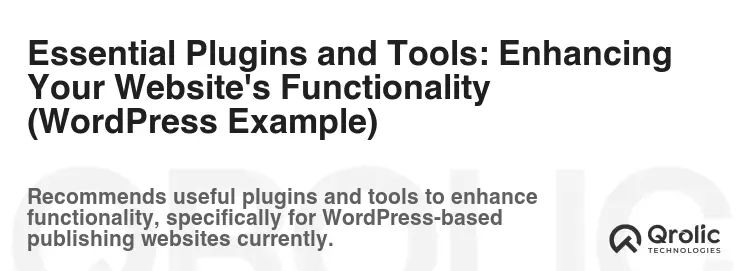
If you’re using WordPress, there are several plugins that can enhance your website’s functionality.
Recommended WordPress Plugins for Publishing Companies:
- Yoast SEO: A plugin that helps you optimize your website for search engines.
- Contact Form 7: A plugin that allows you to create contact forms.
- WooCommerce: A plugin that allows you to sell books directly through your website.
- Mailchimp for WordPress: A plugin that allows you to integrate your website with Mailchimp for email marketing.
- Akismet Anti-Spam: A plugin that helps you protect your website from spam comments.
- Wordfence Security: A plugin that helps you protect your website from security threats.
- UpdraftPlus: A plugin that allows you to back up your website.
- Smush: A plugin that helps you optimize your images for the web.
- Elementor/Divi Builder: Page builders that allow for drag-and-drop website creation.
Marketing Your Publishing Website: Reaching Your Target Audience
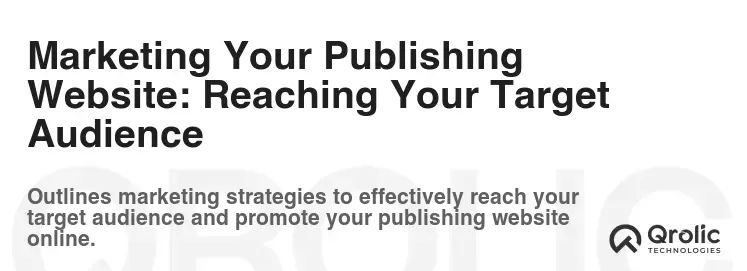
Creating a great website is only half the battle. You also need to market your website to reach your target audience.
Content Marketing: Attracting and Engaging Your Audience
Content marketing is the process of creating and sharing valuable, relevant, and consistent content to attract and engage your target audience.
Content Marketing Strategies:
- Blog Posts: Write blog posts that are informative, engaging, and relevant to your target audience.
- Ebooks: Create ebooks that offer in-depth information on topics related to your publishing company.
- Infographics: Create infographics that present data in a visually appealing way.
- Videos: Create videos that showcase your authors, books, and publishing company.
- Podcasts: Create podcasts that feature interviews with authors, industry experts, and other interesting guests.
Email Marketing: Building Relationships with Your Readers
Email marketing is the process of building relationships with your readers by sending them email newsletters, updates, and promotions.
Email Marketing Strategies:
- Build an Email List: Offer incentives for people to sign up for your email list.
- Send Regular Newsletters: Send regular newsletters that provide valuable content and updates.
- Segment Your List: Segment your email list based on interests and demographics.
- Personalize Your Emails: Personalize your emails to make them more engaging.
- Track Your Results: Track your email marketing results to see what’s working and what’s not.
Social Media Marketing: Connecting with Readers on Social Platforms
Social media marketing is the process of using social media platforms to connect with your readers, promote your books, and build your brand.
Social Media Marketing Strategies:
- Choose the Right Platforms: Choose the social media platforms that are most popular with your target audience.
- Create Engaging Content: Create engaging content that is relevant to your audience.
- Be Consistent: Post regularly on social media.
- Interact with Your Followers: Interact with your followers by responding to their comments and questions.
- Run Contests and Giveaways: Run contests and giveaways to attract new followers and engage your existing audience.
- Use Hashtags: Use relevant hashtags to reach a wider audience.
Paid Advertising: Reaching a Wider Audience Quickly
Paid advertising can be a quick way to reach a wider audience.
Paid Advertising Options:
- Google Ads: Use Google Ads to target people who are searching for keywords related to your publishing company.
- Social Media Ads: Use social media ads to target people based on their interests, demographics, and behaviors.
Analyzing and Improving Your Website: Continuous Growth
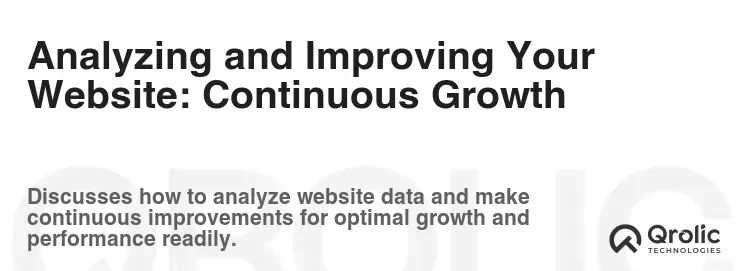
Your website is not a static entity. It’s a living, breathing thing that needs to be constantly analyzed and improved.
Google Analytics: Understanding Your Website’s Performance
Google Analytics is a free tool that allows you to track your website’s traffic, user behavior, and conversions.
Key Metrics to Track:
- Traffic: The number of visitors to your website.
- Bounce Rate: The percentage of visitors who leave your website after viewing only one page.
- Time on Site: The average amount of time visitors spend on your website.
- Conversion Rate: The percentage of visitors who complete a desired action (e.g., purchase a book, sign up for your newsletter).
- Top Pages: The most popular pages on your website.
- Traffic Sources: The sources of your website traffic (e.g., organic search, social media, referral links).
A/B Testing: Optimizing Your Website for Conversions
A/B testing is the process of comparing two versions of a webpage to see which one performs better.
Elements to A/B Test:
- Headings: Test different headlines to see which one attracts the most clicks.
- Images: Test different images to see which one is most engaging.
- Call-to-Action Buttons: Test different call-to-action buttons to see which one generates the most conversions.
- Layout: Test different layouts to see which one is most user-friendly.
User Feedback: Gathering Insights from Your Audience
Gathering user feedback is a great way to identify areas for improvement on your website.
Methods for Gathering User Feedback:
- Surveys: Send out surveys to your website visitors to gather their feedback.
- Feedback Forms: Add a feedback form to your website.
- User Testing: Conduct user testing sessions to observe how people use your website.
Qrolic Technologies: Your Partner in Digital Success

At Qrolic Technologies (https://qrolic.com/), we understand the unique challenges and opportunities facing publishing companies in the digital age. We offer a comprehensive range of services to help you build a powerful online presence and achieve your business goals.
Our Services for Publishing Companies
- Website Design and Development: We create visually stunning and user-friendly websites that reflect your brand identity and engage your target audience.
- SEO Optimization: We help you improve your website’s ranking in search engine results pages, driving more organic traffic to your site.
- Content Marketing: We create high-quality content that attracts and engages your target audience, building brand awareness and generating leads.
- Social Media Marketing: We help you connect with your readers on social media, promoting your books and building your brand.
- Email Marketing: We help you build relationships with your readers through effective email marketing campaigns.
- Digital Advertising: We help you reach a wider audience through targeted digital advertising campaigns.
- E-commerce Solutions: We help you set up and manage an online store to sell your books directly to readers.
- Custom Software Development: We develop custom software solutions to streamline your publishing processes and improve efficiency.
Why Choose Qrolic Technologies?
- Industry Expertise: We have a deep understanding of the publishing industry and the unique needs of publishing companies.
- Proven Track Record: We have a proven track record of helping publishing companies achieve their digital marketing goals.
- Customized Solutions: We tailor our services to meet your specific needs and budget.
- Dedicated Support: We provide dedicated support to ensure your satisfaction.
Conclusion: Building a Thriving Online Presence for Your Publishing Company
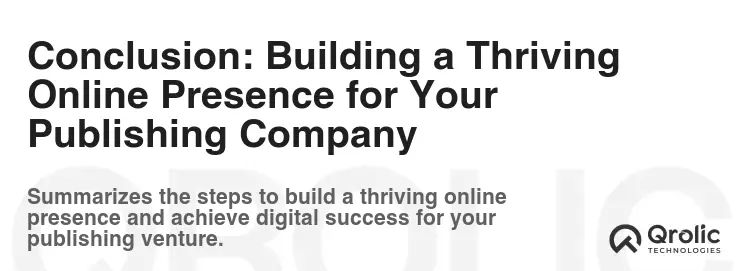
Creating a publishing company website is an investment in your future. By following the steps outlined in this guide, you can build a website that attracts authors, engages readers, and drives sales. Remember to focus on creating high-quality content, optimizing your website for search engines, and marketing your website effectively. And don’t be afraid to seek help from experts like Qrolic Technologies to ensure your success. The world of literature is evolving, and your website is your digital quill, ready to write the next chapter of your publishing journey.
